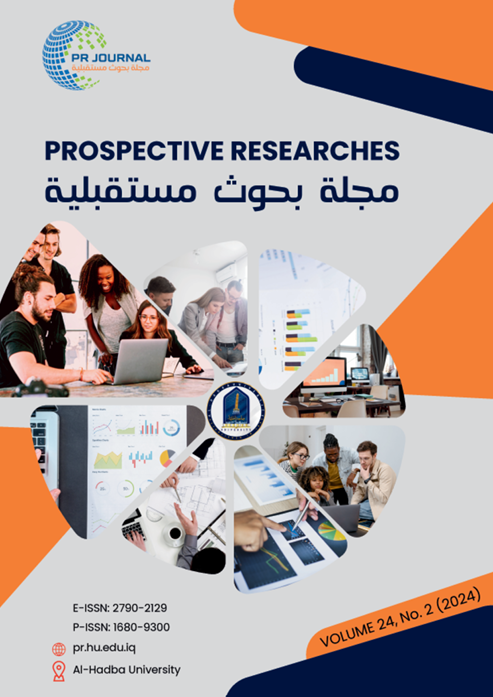Data Privacy Assurance in Management Information System through Cyber Security Measures
DOI:
https://doi.org/10.61704/jpr.v24i2.pp1-6Keywords:
Data Privacy, Management Information System, Cyber SecurityAbstract
In the digital age, safeguarding data within Management Information Systems (MIS) is critical. This study investigates the influence of cyber security measures on data privacy assurance in MIS. Drawing from the Information System Theory, the research examines encryption techniques, firewalls, and intrusion detection systems. The literature underscores the importance of robust cyber security measures. Encryption techniques, firewalls, and intrusion detection systems play pivotal roles in data privacy assurance. Hypotheses are formulated based on theoretical underpinnings and prior research. Methodologically, a stratified random sampling technique gathers data from diverse organizations, resulting in 67 responses. SMART PLS 4 analyzes data considering the exploratory nature of the study. Results reveal the significant impact of encryption techniques and intrusion detection systems on data privacy assurance. Encryption techniques exhibit a positive relationship, while firewalls contribute modestly. A counterintuitive negative relationship between intrusion detection systems and data privacy assurance prompts further investigation. These findings emphasize the multifaceted nature of data privacy assurance in MIS. Organizations are encouraged to leverage encryption techniques and enhance firewall strategies. The unexpected negative impact of intrusion detection systems highlights the complex dynamics of security. This study contributes to discussions on data privacy and security in organizational contexts. Future research should explore underlying mechanisms behind counterintuitive relationships and the intersection of technology and security in MIS
References
Acquisti, A., and Grossklags, J. (2005). Privacy and Rationality in Individual Decision Making, IEEE Security & Privacy, 3(1), pp. 26-33.
Amo, D., Fonseca, D., Alier, M., García-Peñalvo, F., and Casañ, M. (2019). “Personal Data Broker Instead of Blockchain for Students’ Data Privacy Assurance”. In: Rocha, A., Adeli, H., Reis, L., and Costanzo, S. (Eds), New Knowledge in Information Systems and Technologies: Volume 3, Springer, Cham.
Brown, E., and Jones, D. (2019). Firewall Effectiveness and Data Privacy Assurance: A Quantitative Analysis of Organizational Practices, Cybersecurity Journal, 15(2), pp. 187-203.
Denning, D. (1987). An Intrusion-Detection Model, IEEE Transactions on Software Engineering, 13(2), pp. 222-232.
EU GDPR (2016). Regulation (EU) 2016/679 of the European Parliament and of the Council of 27 April 2016 on the Protection of Natural Persons.
Fornell, C., and Larcker, D. (1981). Evaluating Structural Equation Models with Unobservable Variables and Measurement Error, Journal of Marketing Research, 18(1), pp. 39-50.
Ghosh, S., and Swaminathan, R. (2013). Secure Data Mining in the Presence of Adversarial Attacks, IEEE Transactions on Knowledge and Data Engineering, 25(8), pp. 1748-1760.
Hair, J., Risher, J., Sarstedt, M., and Ringle, C. (2019) When to Use and How to Report the Results of PLS-SEM”, European Business Review, 31(1), pp. 2-24.
Henseler, J., Ringle, C., and Sinkovics, R. (2009). “The Use of Partial Least Squares Path Modeling in International Marketing”. In:
Sinkovics, R., and Ghauri, P. (Eds), New Challenges to International Marketing: Vol. 20, Emerald Group Publishing Limited.
ISO/IEC 27001 (2013). Information Technology - Security Techniques, Information Security Management Systems – Requirements.
Jameel, A., Hamdi, S., Karem, M., and Alheety, A. (2023). Exploring Users’ Intentions for Using Mobile Payment Applications, Based on Unified Theory of Acceptance and Use of Technology Theory, Cihan University-Erbil Journal of Humanities and Social Sciences, 7(1), pp. 148-153.
Khraisat, A., Gondal, I., Vamplew, P., and Kamruzzaman, J. (2019). Survey of Intrusion Detection Systems: Techniques, Datasets and Challenges, Cybersecurity, 2(1), pp. 1-22.
Kshetri, N. (2017). Cybercrime and Cyber-Security Issues Associated with China: Some Economic and Institutional Considerations, Telecommunications Policy, 41(10), pp. 1021-1037.
Laudon, K., and Laudon, J. (2020). Management Information Systems: Managing the Digital Firm, 16th Edition, Pearson.
Lee, H., and Patel, R. (2020). Uncovering Counterintuitive Effects: A Study on Security Measures and Data Privacy Assurance in Large Organizations, Journal of Cybersecurity Research, 28(3), pp. 321-336.
Li, Y., Sun, H., and Zhang, K. (2020). A Review of Information Privacy Research in Information Systems: An Interdisciplinary Perspective, Pacific Asia Journal of the Association for Information Systems, 12(1), pp. 47-71.
Liu, S., Guo, C., and Sheridan, J. (2014). A Review of Optical Image Encryption Techniques, Optics & Laser Technology, 57, pp. 327-342.
Nam, S., Kim, D., and Jin, C. (2018). A Comparison Analysis among Structural Equation Modeling (AMOS, LISREL and PLS) Using the Same Data, Journal of the Korea Institute of Information and Communication Engineering, 22(7), pp. 978-984.
Sharma, R., Kalita, H., and Issac, B. (2014). Different Firewall Techniques: A Survey, Proceedings of Fifth International Conference on Computing, Communications and Networking Technologies (ICCCNT), pp. 1-6.
Smith, A., Johnson, B., and Williams, C. (2018). Enhancing Data Privacy Assurance through Encryption Techniques: A Case Study of IT Security Practices, Journal of Information Security, 23(4), pp. 465-482.
Thabit, T, Raewf, M., Abdulrahman, O., and Younis, S. (2016). The Adoption of e-Commerce in SMEs: A Case Study on A Sample of Iraqi Enterprises, International Journal of Latest Research in Engineering and Technology, 2(6), pp. 38-46.
Thabit, T. (2019). The Influence of Mobile Information Technologies in Enhancing the Electronic Audit, Proceedings of 3rd International Scientific Conference in the World Islamic Sciences & Education University, Amman – Jordan, pp. 1-7.
Thabit, T., Ishhadat, H., and Abdulrahman, O. (2020). Data Governance Based on COBIT2019 Framework to Achieve Sustainable Development Goals, Journal of Techniques, 2(3), pp. 9-18.
Vacca, J. (2015). Computer and Information Security Handbook, 2nd Edition, Morgan Kaufmann.
Downloads
Published
How to Cite
Issue
Section
License
Copyright (c) 2024 Journal of Prospective Researches

This work is licensed under a Creative Commons Attribution-NonCommercial-NoDerivatives 4.0 International License.
Copyright © 2025 by the authors. This work is licensed under a Creative Commons Attribution-NonCommercial-NoDerivatives 4.0 International License (CC BY-NC-ND 4.0). You may not alter or transform this work in any way without permission from the authors. Non-commercial use, distribution, and copying are permitted, provided that appropriate credit is given to the authors and Al-Hadba University.







